Hand hygiene for the prevention of infections in neonates
- PMID: 37278689
- PMCID: PMC10243182
- DOI: 10.1002/14651858.CD013326.pub4
Hand hygiene for the prevention of infections in neonates
Abstract
Background: Annually, infections contribute to approximately 25% of the 2.8 million neonatal deaths worldwide. Over 95% of sepsis-related neonatal deaths occur in low- and middle-income countries. Hand hygiene is an inexpensive and cost-effective method of preventing infection in neonates, making it an affordable and practicable intervention in low- and middle-income country settings. Therefore, hand hygiene practices may hold strong prospects for reducing the occurrence of infection and infection-related neonatal death.
Objectives: To determine the effectiveness of different hand hygiene agents for preventing neonatal infection in both community and health facility settings.
Search methods: Searches were conducted without date or language limits in December 2022 in the Cochrane Central Register of Controlled Trials (CENTRAL), MEDLINE, Embase and Cumulated Index to Nursing and Allied Health Literature (CINAHL), clinicaltrials.gov and International Clinical Trials Registry Platform (ICTRP) trial registries. The reference lists of retrieved studies or related systematic reviews were screened for studies not identified by the searches. SELECTION CRITERIA: We included randomized controlled trials (RCTs), cross-over trials, and cluster trials that included pregnant women, mothers, other caregivers, and healthcare workers who received interventions within either the community setting or in health facility settings, and the neonates in the neonatal care units or community settings.
Data collection and analysis: We used standard methodological procedures expected by Cochrane and the GRADE approach to assess the certainty of evidence. Primary outcomes were incidence of suspected infection (author-defined in study) within the first 28 days of life, bacteriologically confirmed infection within the first 28 days of life, all-cause mortality within the first seven days of life (early neonatal death), and all-cause mortality from the 8th to the 28th day of life (late neonatal death).
Main results: Our review included six studies: two RCTs, one cluster-RCT, and three cross-over trials. Three studies involved 3281 neonates; the remaining three did not specify the actual number of neonates included in their study. Three studies involved 279 nurses working in neonatal intensive care units (NICUs). The number of nurses included was not specified by one study. A cluster-RCT included 103 pregnant women of over 34 weeks gestation from 10 villages in a community setting (sources of data: 103 mother-neonate pairs) and another community-based study included 258 married pregnant women at 32 to 34 weeks of gestation (the trial reported adverse events on 258 mothers and 246 neonates). Studies examined the effectiveness of different hand hygiene practices for the incidence of suspected infection (author-defined in study) within the first 28 days of life. Three studies were rated as having low risk for allocation bias, two studies were rated as unclear risk, and one was rated as having high risk. One study was rated as having a low risk of bias for allocation concealment, one study was rated as unclear risk, and four werw rated as having high risk. Two studies were rated as having low risk for performance bias and two were rated as having low risk for attrition bias. One class of agent versus another class of agent: 2% chlorhexidine gluconate (CHG) compared to alcohol hand sanitiser (61% alcohol and emollients) For this comparison, no study assessed the effect of the intervention on the incidence of suspected infection within the first 28 days of life. Two percent chlorhexidine gluconate (CHG) probably reduces the risk of all infection in neonates compared to 61% alcohol hand sanitiser in regard to the incidence of all bacteriologically confirmed infection within the first 28 days of life (RR 0.79, 95% confidence interval (CI) 0.66 to 0.93; 2932 participants, 1 study; moderate-certainty evidence), number needed to treat for an additional beneficial outcome (NNTB): 385. The adverse outcome was reported as mean self-reported skin change and mean observer-reported skin change. There may be little to no difference between the effects of 2% CHG on nurses' skin compared to alcohol hand sanitiser, based on very low-certainty evidence for mean self-reported skin change (mean difference (MD) -0.80, 95% CI -1.59 to 0.01; 119 participants, 1 study) and on mean observer reported skin change (MD -0.19, CI -0.35 to -0.03; 119 participants, 1 study), respectively. We identified no study that reported on all-cause mortality and other outcomes for this comparison. None of the included studies assessed all-cause mortality within the first seven days of life nor the duration of hospital stay. One class of agent versus two or more other classes of agent: CHG compared to plain liquid soap + hand sanitiser We identified no studies that reported on our primary and secondary outcomes for this comparison except for author-defined adverse events. We are very uncertain whether plain soap plus hand sanitiser is better than CHG for nurses' skin based on very low-certainty evidence (MD -1.87, 95% CI -3.74 to -0.00; 16 participants, 1 study; very low-certainty evidence). One agent versus standard care: alcohol-based handrub (hand sanitiser) versus usual care The evidence is very uncertain whether alcohol-based handrub is better than 'usual care' in the prevention of suspected infections, as reported by mothers (RR 0.98, CI 0.69 to 1.39; 103 participants, 1 study, very low-certainty evidence). We are uncertain whether alcohol-based hand sanitiser is better than 'usual care' in reducing the occurrence of early and late neonatal mortality (RR 0.29, 95% CI 0.01 to 7.00; 103 participants, 1 study; very low-certainty evidence) and (RR 0.29, CI 0.01 to 7.00; 103 participants, 1 study; very low-certainty evidence), respectively. We identified no studies that reported on other outcomes for this comparison.
Authors' conclusions: We found a paucity of data that would allow us to reach meaningful conclusions pertaining to the superiority of one form of antiseptic hand hygiene agent over another for the prevention of neonatal infection. Also, the sparse available data were of moderate- to very low-certainty. We are uncertain as to the superiority of one hand hygiene agent over another because this review included very few studies with very serious study limitations.
Copyright © 2023 The Authors. Cochrane Database of Systematic Reviews published by John Wiley & Sons, Ltd. on behalf of The Cochrane Collaboration.
Conflict of interest statement
BPK has no conflicts to declare. TAO has no conflicts to declare. OO has no conflicts to declare. CO has no conflicts to declare. EU has no conflicts to declare. SB has no conflicts to declare. DH has no conflicts to declare. MM has no conflicts to declare.
Figures
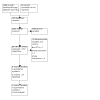

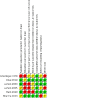

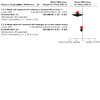

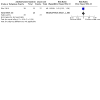
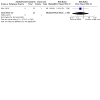

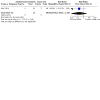
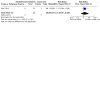

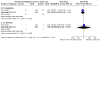
Update of
-
Hand hygiene for the prevention of infections in neonates.Cochrane Database Syst Rev. 2021 Jul 6;7(7):CD013326. doi: 10.1002/14651858.CD013326.pub3. Cochrane Database Syst Rev. 2021. Update in: Cochrane Database Syst Rev. 2023 Jun 6;6:CD013326. doi: 10.1002/14651858.CD013326.pub4. PMID: 34228360 Free PMC article. Updated.
References
References to studies included in this review
Amortegui 1978 {published data only}
-
- Amortegui AJ, Buffenmeyer C. Comparison of the antiseptic effect of two Iodophor preparations on hand washing in a well-baby nursery. Journal of Obstetric, Gynecologic, and Neonatal Nursing 1978;7(6):35-8. [PMID: ] - PubMed
Ditai 2019 {published data only}
-
- Ditai J, Abeso J, Odeke NM, Mobbs N, Dusabe-Richards J, Mudoola M, et al. BabyGel pilot: a pilot cluster randomised trial of the provision of alcohol handgel to postpartum mothers to prevent neonatal and young infant infection-related morbidity in the community. Pilot and Feasibility Studies 2019;5:49. - PMC - PubMed
Larson 2000 {published data only}
-
- Larson E, Silberger M, Jakob K, Whittier S, Lai L, Latta PD, et al. Assessment of alternative hand hygiene regimens to improve skin health among neonatal intensive care unit nurses. Heart and Lung: Journal of Critical Care 2000;29(2):136-42. [PMID: ] - PubMed
Larson 2005 {published data only}
-
- Larson EL, Cimiotti J, Haas J, Parides M, Nesin M, Della-Latta P, et al. Effect of antiseptic handwashing vs alcohol sanitizer on health care-associated Infections in neonatal intensive care units. Archives of Pediatrics and Adolescent Medicine 2005;159(4):377-83. [PMID: ] - PubMed
Ram 2020 {published data only}
-
- Ram PK, Begum F, Crabtree-Ide C, Uddin MR, Weaver AM, Dostogir Harun MG, et al. Waterless hand cleansing with chlorhexidine during the neonatal period by mothers and other household members: findings from a randomized controlled trial. American Journal of Tropical Medicine and Hygiene 2020;103(5):2116-26. [DOI: 10.4269/ajtmh.19-0773] - DOI - PMC - PubMed
Sharma 2013 {published data only}
-
- Sharma VS, Dutta S, Taneja N, Narang A. Comparing hand hygiene measures in a neonatal ICU: a randomized crossover trial. Indian Pediatrics 2013;50(10):917-21. [PMID: ] - PubMed
References to studies excluded from this review
Asare 2009 {published data only}
-
- Asare A, Enweronu-Laryea CC, Newman MJ. Hand hygiene practices in a neonatal intensive care unit in Ghana. Journal of Infection in Developing Countries 2009;3(5):352-6. [PMID: ] - PubMed
Azor‐Martinez 2018 {published data only}
-
- Azor-Martinez E, Yui-Hifume R, Muñoz-Vico FJ, Jimenez-Noguera E, Strizzi JM, Martinez-Martinez I, et al. Effectiveness of a hand hygiene program at child care centers: a cluster randomized trial. Pediatrics 2018;142(5):e20181245. [PMID: ] - PubMed
Azor‐Martinez 2020 {published data only}
-
- Azor-Martinez E, Garcia-Fernandez L, Strizzi JM, Cantarero-Vallejo MD, Jimenez-Lorente CP, Balaguer-Martinez JV, et al. Effectiveness of a hand hygiene program to reduce acute gastroenteritis at child care centers: a cluster randomized trial. American Journal of Infection Control 2020;48(11):1315-21. [PMID: ] - PubMed
CTRI/2016/05/006963 {published data only}
-
- CTRI/2016/05/006963. Improving the quality of healthcare at the time of childbirth in primary health centres in two districts of Haryana, India. who.int/trialsearch/Trial2.aspx?TrialID=CTRI/2016/05/006963 (first received 25 May 2016).
Darmstadt 2005 {published data only}
-
- Darmstadt GL, Nawshad Uddin Ahmed AS, Saha SK, Azad Chowdhury MA, Alam MA, Khatun M, et al. Infection control practices reduce nosocomial infections and mortality in preterm infants in Bangladesh . Journal of Perinatology 2005;25(5):331-5. [PMID: ] - PubMed
Herruzo‐Cabrera 2001 {published data only}
-
- Herruzo-Cabrera R, Garcia-Caballero J, Martin-Moreno JM, Graciani-Perez-Regadera MA, Perez-Rodriguez J. Clinical assay of N-duopropenide alcohol solution on hand application in newborn and pediatric intensive care units: control of an outbreak of multiresistant Klebsiella pneumoniae in a newborn intensive care unit with this measure. American Journal of Infection Control 2001;29(3):162-7. [PMID: ] - PubMed
Janota 2014 {published data only}
Kaufman 2014 {published data only}
-
- Kaufman DA, Blackman A, Conaway MR, Sinkin RA. Nonsterile glove use in addition to hand hygiene to prevent late-onset infection in preterm infants: randomized clinical trial. JAMA Pediatrics 2014;168(10):909-16. [PMID: ] - PubMed
NCT03078335 {unpublished data only}
-
- NCT03078335 . Glove-based care in the NICU to prevent late onset sepsis. clinicaltrials.gov/show/NCT03078335 (first received 13 March 2017).
Ng 2004 {published data only}
Ram 2017 {published data only}
-
- Ram PK, Nasreen S, Kamm K, Allen J, Kumar S, Rahman MA, et al. Impact of an intensive perinatal handwashing promotion intervention on maternal handwashing behavior in the neonatal period: findings from a randomized controlled trial in rural Bangladesh. BioMed Research International. 2017;2017:60814702017. - PMC - PubMed
Webster 1989 {published data only}
-
- Webster J, Faoagali JL. An in-use comparison of chlorhexidine gluconate 4% w/v, glycol-poly-siloxane plus methylcellulose and a liquid soap in a special care baby unit. Journal of Hospital Infection 1989;14:141-51. - PubMed
Webster 1991 {published data only}
-
- Webster J, Faoagali JL, Cartwright D. Elimination of methicillin-resistant Siaphylococcus aureus from a neonatal intensive care unit after hand washing with triclosan. Journal of Paediatric Child Health 1994;30:59-64. - PubMed
-
- Webster J. Hand-washing in a neonatal Intensive care unit: comparative effectiveness of chlorhexidine gluconate 4% w/v and triclosan 1% w/v. Australian College of Midwives Incorporated Journal 1991;4(2):25-7. [PMID: ] - PubMed
-
- Webster J. Handwashing in a neonatal intensive care nursery: product acceptability and effectiveness of chlorhexidine gluconate 4% and triclosan 1%. Journal of Hospital Infection 1992;21:137-41. - PubMed
References to ongoing studies
NCT03755635 {published data only}
-
- NCT03755635. Neonatal sepsis at neonatal intensive care units in Ghana. clinicalTrials.gov/show/NCT03755635 (first received 28 November 2018). [DOI: ]
Additional references
Adams‐Chapman 2006
Afonso 2017
Aiello 2003
Ali 2001
-
- Ali Y, Dolan MJ, Fendler EJ, Larson EL. Alcohols. In: Block SS, editors(s). Disinfection, Sterilization, and Preservation. 5th edition. Philadelphia (PA): Lippincott Williams & Wilkins, 2001:229-54.
Bello 2020
-
- Bello S, Bamgboye EA, Ajayi DT, Ossai EN, Aniwada EC, Salawu MM, et al. Handwash versus hand-rub practices for preventing nosocomial infection in hospital intensive care units: a systematic review and meta-analysis. Canadian Journal of Infection Control 2020;35(2):82-90.
Bigliardi 2017
-
- Bigliardi PL, Alsagoff SA, El-Kafrawi HY, Pyon JK, Wa CT, Villa MA. Povidone iodine in wound healing: a review of current concepts and practices. International Journal of Surgery 2017;1(44):260-8. - PubMed
CADTH 2014
-
- Canadian Agency for Drugs and Technologies in Health. Alcohol with chlorhexidine hand sanitizers: clinical effectiveness and guidelines. cadth.ca/alcohol-chlorhexidine-hand-sanitizers-clinical-effectiveness-an... (accessed 19 March 2019).
Chan 2013
Chu 2014
Cortese 2016
Covidence 2019 [Computer program]
-
- Covidence. Covidence. Melbourne, Australia: Veritas Health Innovation, 2019. Available at covidence.org.
Deeks 2022
-
- Deeks JJ, Higgins JP, Altman DG, on behalf of the Cochrane Statistical Methods Group, editor(s). Chapter 10: Analysing data and undertaking meta-analyses.In: Higgins JP, Thomas J, Chandler J, Cumpston M, Li T, Page MJ, Welch VA (editors). Cochrane Handbook for Systematic Reviews of Interventions version 6.3 (updated February 2022). Cochrane, 2022. Available from www.training.cochrane.org/handbook.
Effa 2017
-
- Effa E, Durao S, Kredo T, Mbuagbaw L, Meremikwu M, Ongolo-Zogo P, et al. Process and lessons learned during priority setting in three countries in Africa. In: Abstracts of the Global Evidence Summit. Vol. 9 Suppl 1. Cape Town, South Africa: Cochrane Database of Systematic Reviews, 2017:107. [DOI: 10.1002/14651858.CD201702] - DOI
Gebremedhin 2016
Goldstein 2005
-
- Goldstein B, Giroir B, Randolph A, International Consensus Conference on Pediatric Sepsis. International pediatric sepsis consensus conference: definitions for sepsis and organ dysfunction in pediatrics. Pediatric Critical Care Medicine 2005;6(1):2-8. [DOI: 10.1097/01.PCC.0000149131.72248.E6] [PMID: ] - DOI - PubMed
Gottardi 2001
-
- Gottardi W. Iodine and iodine compounds. In: Block SS, editors(s). Disinfection, sterilization, and preservation. 5th edition. Vol. 4. Gainesville, FL: Lippincott Williams & Wilkins, 2001:159-83.
GRADEpro GDT [Computer program]
-
- GRADEpro GDT. Version accessed 2 April 2018. Hamilton (ON): McMaster University (developed by Evidence Prime). Available at gradepro.org.
Greenland 2013
Higgins 2022
-
- Higgins JP, Thomas J, Chandler J, Cumpston M, Li T, Page MJ, et al (editors). Cochrane Handbook for Systematic Reviews of Interventions version 6.3 (updated February 2022). Cochrane, 2022. Available from www.training.cochrane.org/handbook.
Larson 1998
-
- Larson EL, Hughes CA, Pyrek JD, Sparks SM, Cagatay EU, Bartkus JM. Changes in bacterial flora associated with skin damage on hands of health care personnel. American Journal of Infection Control 1998;26(5):513-21. [PMID: ] - PubMed
Liu 2015
-
- Liu L, Oza S, Hogan D, Perin J, Rudan I, Lawn JE, et al. Global, regional, and national causes of child mortality in 2000–13, with projections to inform post-2015 priorities: an updated systematic analysis. Lancet 2015;385(9966):430-40; Erratum in: Lancet; 2015; 31;385(9966):420. [DOI: 10.1016/S0140-6736(14)61698-6] [PMID: ] - DOI - PubMed
Loveday 2014
-
- Loveday HP, Wilson JA, Pratt RJ, Golsorki M, Tingle A, Bak A, et al. Epic3: national evidence-based guidelines for preventing healthcare-associated infections in NHS hospitals in England. Journal of Hospital Infection 2014;86(Suppl 1):S1-70. [DOI: 10.1016/S0195-6701(13)60012-2] [PMID: ] - DOI - PMC - PubMed
Moher 2009
-
- Moher D, Liberati A, Tetzlaff J, Altman DG, PRISMA Group. Preferred reporting items for systematic reviews and meta-analyses: the PRISMA statement. Journal of Clinical Epidemiology 2009;62(10):1006-12. [PMID: ] - PubMed
Mortimer 1962
-
- Mortimer EA Jr, Lipsitz PJ, Wolinsky E, Gonzaga AJ, Rammelkamp CH Jr. Transmission of staphylococci between newborns. Importance of the hands to personnel. American Journal of Diseases of Children 1962;104:289-95. [PMID: ] - PubMed
Pessoa‐Silva 2004
Ranjeva 2018
Review Manager 2020 [Computer program]
-
- Review Manager 5 (RevMan 5). Version 5.3. Copenhagen: The Cochrane Collaboration, 2020.
Rhee 2008
Rotter 1999
-
- Rotter M. Hand washing and hand disinfection. In: Mayhall CG, editors(s). Hospital Epidemiology and Infection Control. 2nd edition. Philadelphia (PA): Lippincott Williams & Wilkins, 1999:1339-55.
Schuchat 2000
-
- Schuchat A, Zywicki SS, Dinsmoor MJ, Mercer B, Romaguera J, O'Sullivan MJ, et al. Risk factors and opportunities for prevention of early-onset neonatal sepsis: a multicenter case-control study. Pediatrics 2000;105(1 Pt 1):21-6. [PMID: ] - PubMed
Schünemann 2013
-
- Schünemann H, Brożek J, Guyatt G, Oxman A, editor(s). Handbook for grading the quality of evidence and the strength of recommendations using the GRADE approach (updated October 2013). GRADE Working Group, 2013. Available from gdt.guidelinedevelopment.org/app/handbook/handbook.html.
Tanner 2016
UN 2017
-
- United Nations Economic and Social Council. Progress towards the sustainable development goals: report of the Secretary-General. 2017. unstats.un.org/sdgs/files/report/2017/secretary-general-sdg-report-2017-... (accessed 28 June 2018).
Webster 1994
-
- Webster J, Faoagali JL, Cartwright D. Elimination of methicillin-resistant Staphylococcus aureus from a neonatal intensive care unit after hand washing with triclosan. Journal of Paediatrics and Child Health 1994;30(1):59-64. [PMID: ] - PubMed
WHO 2009
-
- World Health Organization. WHO guidelines on hand hygiene in health care: a summary. apps.who.int/iris/bitstream/10665/70126/1/WHO_IER_PSP_2009.07_eng.pdf (accessed 2 April 2018).
Won 2004
Wynn 2010
Zafar 1995
-
- Zafar AB, Butler RC, Reese DJ, Gaydos LA, Mennonna PA. Use of 0.3% triclosan (Bacti–Stat) to eradicate an outbreak of methicillin-resistant Staphylococcus aureus in a neonatal nursery. American Journal of Infection Control 1995;23(3):200-8. [PMID: ] - PubMed
References to other published versions of this review
Kuti 2019
-
- Kuti BP, Ogunlesi TA, Oduwole O, Oringanje C, Udoh EE, Meremikwu MM. Hand hygiene for the prevention of infections in neonates. Cochrane Database of Systematic Reviews 2019, Issue 5. Art. No: CD013326. [DOI: 10.1002/14651858.CD013326] - DOI
Kuti 2021a
Publication types
MeSH terms
Substances
LinkOut - more resources
Full Text Sources
Medical

